First of all, I attended my daughter Clarice's school play on Friday evening beginning our drive, so we didn't arrive in Portland until nearly 3am, much too late to begin pitching camp. Second, it rained on Saturday's practice and qualifying sessions, making a nice dry, warm hotel room a welcome asset.
It didn't rain that hard on the Saturday morning qualifying session...
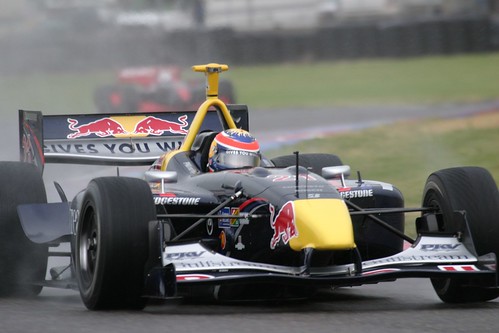
...but by the time the Atlantics cars took the track for the first of their two races of the weekend, the rain was coming down pretty hard. Quite frankly, I don't know how these guy can see where they're going in the rain. It's not just that the rain is falling from the sky, but when an open-wheel race car speeds across the wet track, the car throws water from the track back into the air in a "rooster tail," further increasing the amount of moisture in the air. The driver of the lead car might be able to see where he or she is going, but the drivers close behind that car can bearly see a thing.

We were pretty surprised that the Saturday afternoon Champ Car qualifying session happened at all. By the time that session started, it was pouring and there was lots of standing water on the track.
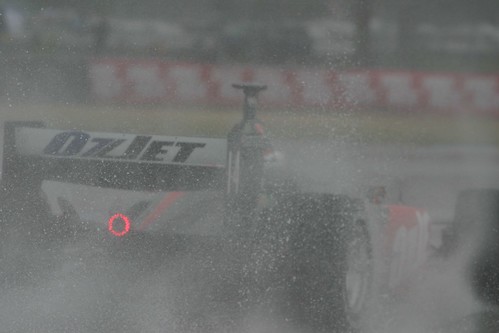
While it made for some amazing photos, the photographers around the track probably got wetter than the drivers. We not only had to contend with the rain, but were blasted by the spray every time a car went by.
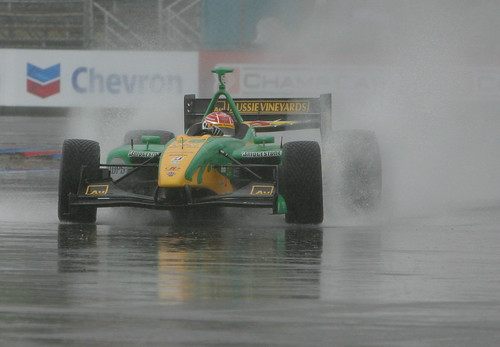
I had actually planned ahead, having purchased a rain cover for my Canon digital SLR and lenses, although I'm not 100% satisfied with the product I chose. I bought a Lightware RC100 rain cover from B&H Photo (the store from which I purchase most of my photo gear). The cover has a drawstring that cinches one end of the cover around the end of the lens. But I found I needed to add some gaffer's tape to keep this from sliding back from the end of the lens. The rest of the cover closes with velcro, which makes it easy to get your hands up inside the cover to adjust the lens. But the cover is quite long, much longer than my longest lens. The extra length actually got in the way. Again, some tape helped mitigate this problem.
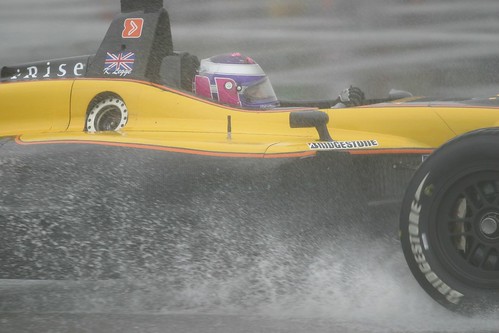
But the end result was that my camera still got quite wet, so wet in fact that several of the lens' functions stopped working. By mid-afternoon, I could no longer adjust the ISO setting when in any of the camera's manual modes, and lenses would no longer auto-focus except when the camera was set into programmed modes.
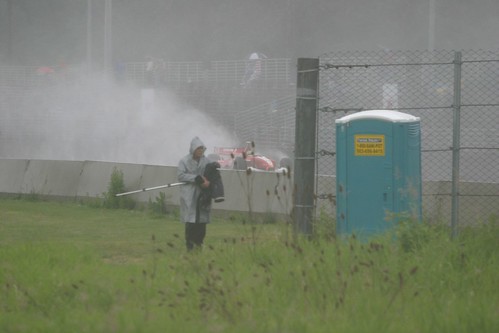
I was also soaked all the way through in spite of wearing a supposedly waterproof jacket. Thanks to our nice dry hotel room, however, all of these problems were easily resolved at the end of the day. I hung up my clothes to dry and used a hair dryer to dry my shoes. But Elliott suggested the cure for my camera. I removed the lens and turned the open body face down over the keyboard of my laptop while we went out for dinner. The warm air gently rising from the computer dried things out nicely. By the time we returned from dinner, all of the functions were once again working properly.
You can view a more extensive selection of photos on my Flickr site.
Click here to view as a slideshow.


No comments:
Post a Comment